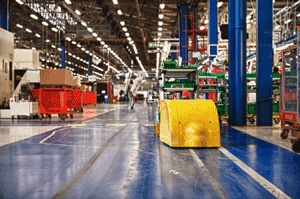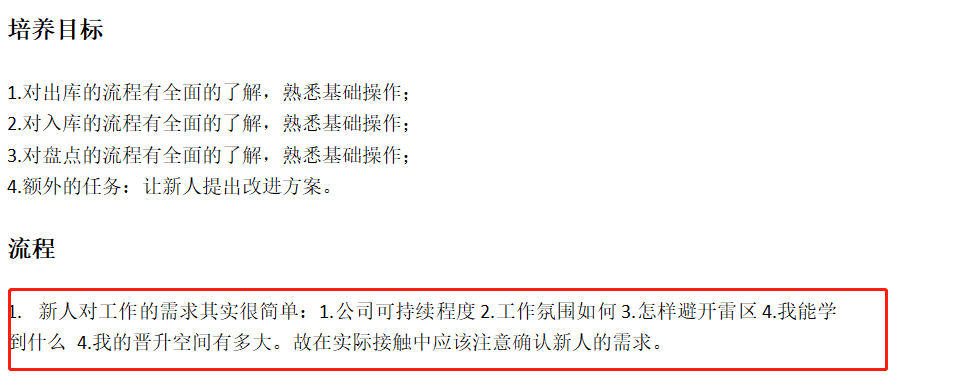10 Ways to Improve Warehouse Efficiency and Reduce CostsCurt Barry February 2, 2017

A client quipped the other day, “You know, managing a multichannel warehouse is a pretty easy thing. All you have to do is manage the labor, the freight and the inventory!”
And from there a thousand other factors assault you. In some ways he’s right though. Shipping has become the number-one cost in fulfillment and requires constant review and change to keep costs in line or minimize increases. The cost of labor is increasing in many markets as the economy improves ever so slowly. Faced with increases in the minimum wage, many of our ideas focus on how to gain more productivity per labor hour. In our Seattle minimum wage article we asked readers how they improved productivity through incentive pay and were able to pay the employee more. While comments came to us for weeks, not one was offered for incentives and paying employees more. Inventory is the number-one balance sheet asset in most multichannel businesses. Slotting and location control help you track product within the warehouse’s four walls and fulfillment processes. So it is easy! Here are 10 ways to improve your warehouse efficiency and reduce costs.
1. Controlling inbound and outbound freight控制好进库和出库发运环节
Virtual libraries are being filled with articles on how to reduce or slow down this area of cost. It must be your number-one ongoing focus to prevent profit erosion. Use a consultant to help you competitively bid. While carrier agreements are proprietary, experienced consultants can still help identify areas to negotiate reductions without hurting service levels.
2. Incentive pay设计好的薪酬激励
Properly engineered incentive pay for performance can bring the biggest percent improvement in labor productivity. More than 50% of your warehouse labor is in pick and pack, so start there. You always need to be sure you’re not paying for productivity you’re already getting or could get in other ways.
3. Simplify Processes – Reduce Touches – Reduce Costs简化流程-减少搬运-降低成本
Over the years, have you been layering new functions over longer term existing ones? Do product flow and order flow no longer make sense and crisscross the floor? Take a fresh look at the physical processes and steps involved in product flow and order fulfillment. Generally speaking, less steps equal fewer touches equal lower costs.
4. You Can’t Improve Something You Haven’t Measured …. Feedback to the Employee没有衡量基准就无法改善, 定期向员工公布衡量和改善结果
Does your operation capture and manage critical KPIs? Do you know your critical productivity and costs on shipped orders, cost per box and cost per line shipped? I was in a $20 million company the other day and they couldn’t show me these critical metrics. How can we assess and put in place cost reduction measures if we don’t know the baseline? What do various types of errors cost? What do returns cost? Once these things are established, THEN create regular feedback to the employees on individual and departmental performance. They’ll respond and give you higher productivity.
5. Develop More Effective Frontline Managers培养更优秀的现场管理者
Effective managers know it’s all about execution. Their ability to efficiently manage all aspects of fulfillment radically affects your costs, worker morale and the quality of customer order fulfillment. What are their individual needs? What exposure to other aspects of your business will help them understand your merchandise, your customers and vendors? What training resources are available online or locally?
6. Inbound Supply Chain 做好收货入库环节的系统性工作
Changes to supply chain include scheduling inbound purchase orders to manage the receiving dock and yard better. Develop vendor compliance policies, including purchasing terms and conditions, on-time delivery, quality and item specifications, routing guides and importing guides, product packaging and labeling and drop ship vendor standards. Push quality and value-added services up the supply chain to the vendors so the product is ready to be put away or shipped. This reduces labor for rework of mistakes.
7. Voice-Enabling Technology应用语音技术
Some vendors reduced the costs to make this technology available to all different sized businesses. Voice enabling can be applied to all processes and departments – from receiving to shipping and returns – for better inventory control and increased productivity. These systems have quick install times, require no IT or modifications to your WMS, don’t require extensive training and have a fast ROI – as quickly as four to six months. Do your due diligence though, because not all voice applications are created equal.
8. Consider Third-Party Fulfillment合理评价第三方的执行能力
Third party fulfillment (3PF) isn’t for everyone. Many of our clients believe they can do fulfillment cheaper and with higher quality themselves. However, we have seen good experiences from 3PF at costs competitive with internal costs. Using a 3PF partner means capital isn’t tied up in new facilities and systems. For smaller companies 3PF lets management concentrate on marketing and merchandising functions essential to sustain growth. When you need to increase warehousing, storage or order throughput, look at 3PF as an option.
9. SaaS Versus Licensed On Premise Systems SaaS和授权服务的比较
The investment in new order management, enterprise wide or WMS systems is something that companies do only every 5-10 years because of the investment and implementation time frame. A SaaS subscription model provides an option for acquiring a new system at a lower cost. However it’s important to understand the SaaS costs long term vs. the one-time purchase and annual support of traditional systems. Also compare the detail of warehousing function in SaaS WMS. You generally find more effective warehouse functions which can decrease costs and improve service.
10. Continuous improvement process. 持续改善
Great merchants and marketers measure everything and do post mortems of their promotions and results. Do an assessment. Work out a plan. Set objectives and accountability for improvement, review progress and start again.
4 answer
降效方法如此之多,为何执行如此之少?
前天有让一个刚刚转正的职员写新人培养方案(入职时就有让他们做好实习记录,结束之后要写一份更为行之有效的新人培训方案)。

上图是他报告的一部分,一个企业的良性发展是每一个人的愿望,如何集策集力,相信才是执行的关键。
个人看来,公司的引导固然是核心,但在职人员学会去表达,则是一门必修课。
Curt Barry February 2, 2017
一天,一个客户打趣说:“管理仓库是一件很容易的事情。你所要做的就是管理劳动力、货运和库存!”实际上,除此之外,仍然有成百上千种因素困扰着你。
在某些方面他是对的。例如,运输花费已经成为订单交付中排名第一位的成本,物流经理们需要不断地进行评估和改善,以使成本保持不变或只是小幅增涨。
尽管经济增长的幅度减缓,但许多市场上劳动力的成本却在上升。面对最低工资的提高,我们的许多关注点都集中在如何提高每工时的生产率上。在西雅图发布的相关文章中,我们询问过读者是如何通过激励性薪酬提高生产率,并向员工支付更多报酬的。尽管我们收集了数周的反馈,但没有人给出答案。
库存是大多数行业资产负债表中最重要的项目,通过控制产品所在的货位和位置,可以帮助你在仓库内和配送过程中追踪产品。
从这个角度上说,确实很容易!下面是提高仓库效率并降低成本的10种方法。
1. 控制进出货物
虚拟图书馆中有很多降低成本的文章,防止利润下降必须一直是你的第一要务。例如,可以聘请顾问来帮助竞标采购;尽管承运人协议都是现成的,但经验丰富的顾问仍可以帮助我们在不影响服务水平的前提下降低成本。
2. 激励性薪酬
设计适当的绩效奖励可以最大程度地提高劳动生产率。仓库中超过50%的劳动花费在分拣和打包上,不妨从这些方面开始。要始终确保自己没有为额外的无效劳动付费。
3.简化流程–减少接触–降低成本
多年来,你是否把一直存在的操作功能细分?产品流和订单流还在纵横交错吗?请重新审视产品流程和订单执行中涉及的物理过程和步骤。一般而言,更少的步骤等于更少的(人与货物)接触,等于更低的成本。
4。 您无法改善尚未衡量的东西:给员工反馈
你的操作是否进行了测量,并管理关键的KPI?你是否知道关键生产力和订单运输成本(包括每箱和每行)?
前几天,在一家市值2000万美元的公司里,他们无法向我展示这些关键指标。如果我们不了解基准,我们如何评估和实施降低成本的措施呢?各种类型的错误要花多少钱?退货费用是多少?
一旦明确了这些指标,那么就可以定期向员工提供有关个人和部门绩效的反馈。他们会做出回应,并向你回报更高的生产率。
5. 培养更有效的一线经理
有效的经理知道所有的一切都和执行有关。他们有效管理订单执行各个方面的能力,可以从根本上影响成本、员工士气和客户订单履行的质量。他们的个人需求是什么?对业务的全面了解将有助于他们了解你的商品、客户和供应商。
同时,要确定是否有在线或本地培训资源?
6. 入库供应链
包括制定收货计划以更好地管理收货码头和货场。制定供应商必须遵守的规则,包括采购条款和条件、准时交货、质量和物料规格、工艺路线指南和进口指南、产品包装和标签以及直接运输卖方标准。将增值服务推给供应商(让他们按我们的要求交付),自己则做好收货准备,这样就会减少返工风险。
7. 语音技术
语音技术已经能够适用于不同规模的企业,且成本可以接受。语音技术可应用于从接收到发货和退货的所有流程和部门,更好地控制库存并提高生产率。这些系统的安装时间短,不需要IT系统或WMS进行修改,不需要大量的培训,还有很高的投资回报率,如短到4到6个月的投资回收期。但要注意,不是所有语音应用程序都是一样的。
8. 考虑第三方履行
第三方履行(3PF)并不适合所有人。我们的许多客户认为,他们自己可以更便宜,更优质地完成任务。但是,相对于自己做,我们已经从使用3PF中获得了具有成本竞争力的良好经验。使用3PF合作伙伴意味着无需在新设施和系统上投入资金。对于较小的公司,3PF使管理层能够专注于维持增长必不可少的营销和销售功能。当您需要增加仓储面积,提高订单吞吐量时,可以考虑3PF。
9. SaaS与购买软件授权
由于投资和实施时间的限制,公司一般会每5-10年对订单管理、WMS系统进行投资升级。SaaS订阅模型提供了一种以较低成本购买新系统的选择。但是,关键要了解SaaS的长期成本,与传统软件系统的一次性购买和年度支持费用。此外,还要比较SaaS方式的软件,与传统WMS提供的仓库管理功能的细节。通常,您会发现Saas会提供更有效的仓储管理功能,可以降低成本并改善服务。
10. 持续改进
优秀的商人和营销人员会评估所有内容,并发布促销和结果的摘要。做一个评估,制定计划,设定改善目标,划分责任,检查进度并重新开始。
superdos翻译发布于昨天 22:53
This guy is lazy,Introduction has not been set